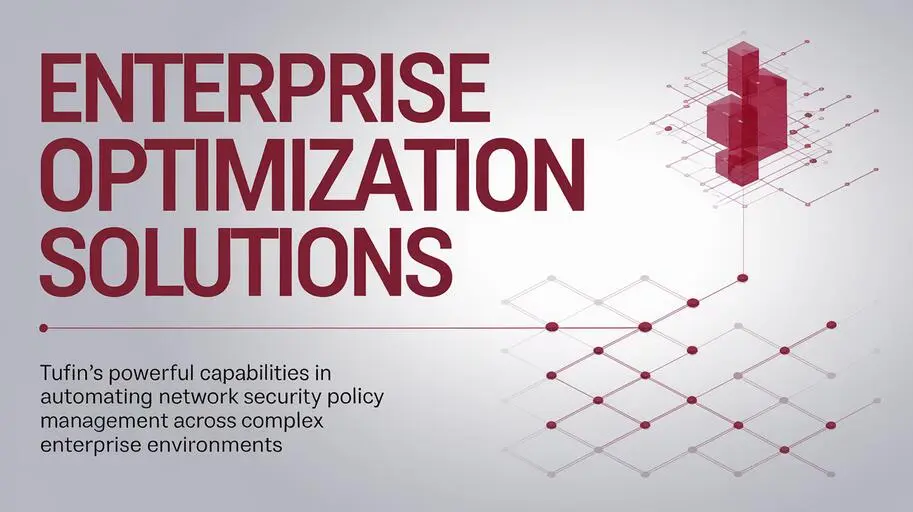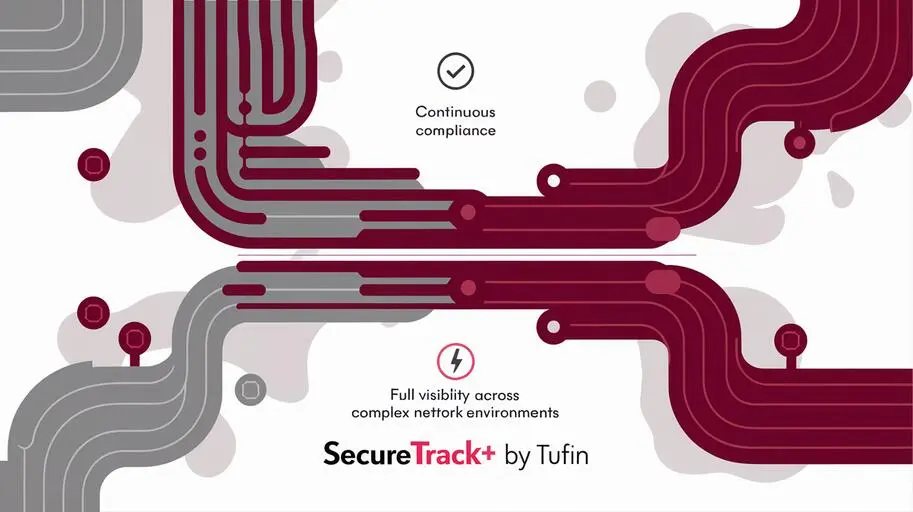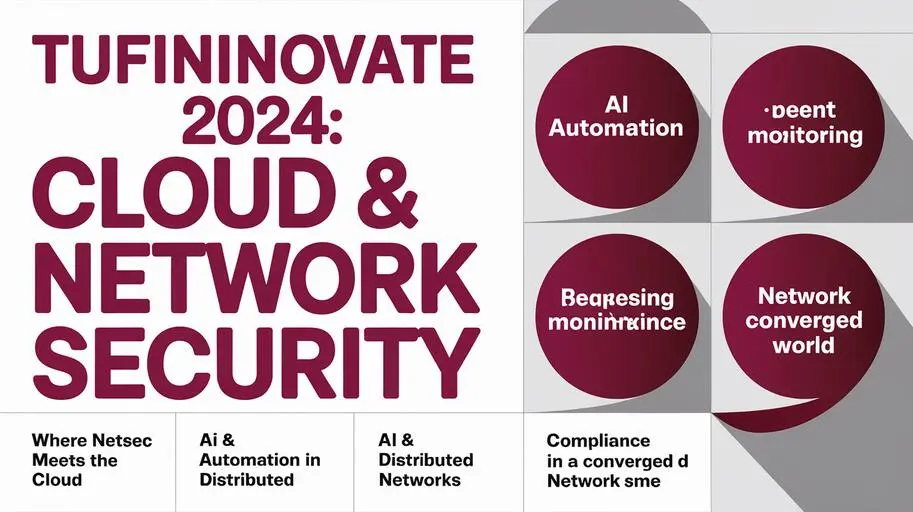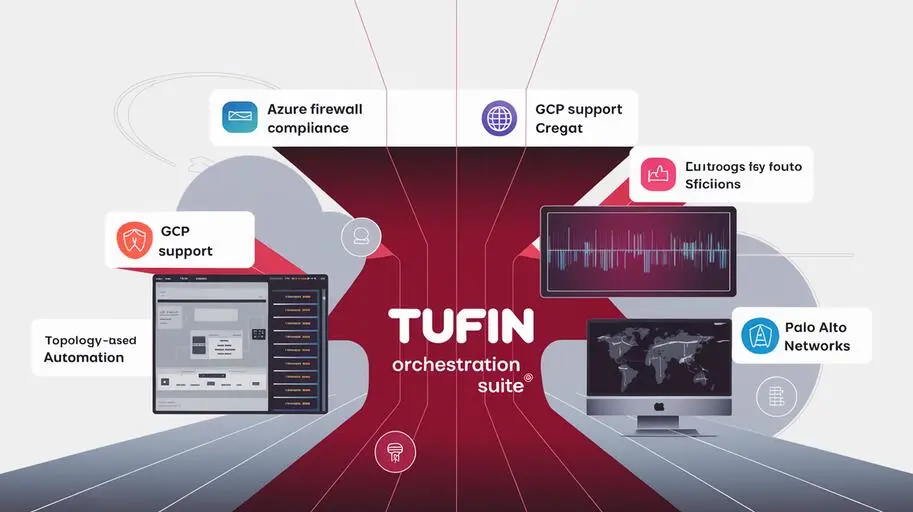
In today’s world, where cloud technologies
have become an integral part of business, ensuring the security of hybrid cloud
infrastructure has become a complex and multifaceted task. Companies
face the need to manage complex security policies,
ensure compliance with regulatory requirements, and protect their data from
an ever-increasing number of threats. Addressing these challenges requires a comprehensive
approach and tools capable of providing centralized management and automation. This is where Tufin comes in, offering a powerful platform for managing cloud security policies that allows organizations to effectively protect their hybrid
cloud environment.
Why Does Hybrid Cloud Security Require a Special Approach?
Moving to a hybrid cloud infrastructure provides many
benefits: flexibility, scalability, and cost-effectiveness. However, it also
creates new challenges in the area of security. Traditional protection methods,
designed for on-premise data centers, are often
ineffective in the cloud environment. Differences in architecture, models
of deployment, and management tools require a specialized approach
to hybrid cloud security.
Hybrid cloud is an infrastructure that combines resources
of the on-premise environment and the public cloud (e.g., AWS, Azure,
GCP), allowing organizations to flexibly distribute computing workloads and
store data in the most appropriate location.
Challenges of Managing Security Policies in a Hybrid Cloud
- Disparate tools and policies: Each cloud platform (AWS,
Azure, GCP) has its own tools and security management interfaces. This makes centralized security policy management difficult
and ensures their consistency across the entire hybrid environment. - Insufficient visibility: The lack of a single view of network topology and
security policies makes it difficult to identify and eliminate potential
vulnerabilities. - Compliance complexity: Organizations must comply
with various regulatory requirements (e.g., PCI DSS, HIPAA, GDPR), which
place strict requirements on the security of cloud environments. - Manual management: Manually configuring and changing security policies
is time-consuming and prone to errors.
Tufin Solution: Automating and Centralizing Security Policy Management
Tufin provides a comprehensive platform for
managing cloud security policies, which allows organizations to overcome the challenges described above and
ensure reliable protection of their hybrid cloud infrastructure.
The Tufin platform consists of several key
components, including SecureTrack and SecureChange, which work closely together (e.g., through APIs and a common database) to provide
automation, centralization, and control over security policies.
Key Components of the Tufin Platform
The Tufin platform offers the following key
components to ensure hybrid cloud security:
SecureTrack: Real-Time Monitoring and Visualization of Security Policies
SecureTrack provides complete visibility
into the network topology and security policies across the entire hybrid cloud environment.
It collects configuration data from network devices, firewalls, and
cloud services, presenting them as interactive maps and reports. This
allows organizations to gain a complete understanding of their network
security, identify potential vulnerabilities, and ensure
compliance with regulatory requirements. SecureTrack provides real-time monitoring of security policy compliance, allowing for prompt response to any deviations.
SecureChange: Automating Security Policy Changes
SecureChange automates the process
of making changes to security policies, from the change request
to its implementation and verification. It integrates with various
change management systems and cloud platforms, allowing
organizations to quickly and securely make changes to their policies
security. SecureChange also provides
risk analysis tools to identify potential security issues
before changes are made, using “what-if” scenarios to
automatically verify security policies before they are applied. Automating changes
significantly reduces the time it takes to make changes and reduces
the likelihood of errors.
Tufin Integration with Cloud Platforms: AWS, Azure, and GCP
The Tufin platform is tightly integrated with
leading cloud platforms, including AWS, Azure, and GCP,
providing a single point of security management
for the entire hybrid cloud infrastructure. Integration allows Tufin to collect configuration data
of cloud services, firewalls, and security groups, as well as
automate changes to security policies in the cloud.
With this, Tufin can bring security policies to a common
denominator between different cloud platforms, abstracting away from
the specific tools of each platform. For example, Tufin can
automatically open ports in AWS security groups, Azure Network Security
Groups, and GCP firewall rules when deploying an application.
Integration with AWS
Tufin integrates with the AWS Security Hub and other
security services of AWS, providing complete
visibility into security policies and compliance requirements in the AWS cloud. This allows organizations to effectively
manage security groups, network ACLs, and other security controls
of AWS.
Integration with Azure
Tufin integrates with the Azure Security Center and other
security services of Azure, providing security monitoring and compliance management
in the Azure cloud. This allows organizations
to effectively manage NSG network rules, Azure Policy policies, and
other security controls of Azure.
Integration with GCP
Tufin integrates with the Google Security Command
Center
and other security services of GCP,
providing deep analysis of security policies
and compliance requirements in the GCP cloud. This
allows organizations to effectively manage firewall rules, VPCs, and
other security controls of GCP.

Cloud Microsegmentation with Tufin
Cloud microsegmentation is a
strategy that allows you to isolate applications and workloads from each
other, limiting the spread of threats in case of compromise. Tufin provides tools for
implementing cloud microsegmentation, allowing organizations to create granular security policies
that control traffic between applications and workloads. Cloud microsegmentation with Tufin significantly increases the level
of security of the hybrid cloud infrastructure.
Tufin uses firewall rules, security groups, network policies to
implement microsegmentation. For example, you can isolate a critical
database from the rest of the infrastructure.
Benefits of Microsegmentation with Tufin
- Reduced risk of threat propagation: Limiting traffic between
applications and workloads prevents the spread of threats in
case of compromise of one of them. - Improved compliance with regulatory requirements: Cloud microsegmentation
helps organizations comply with the requirements of regulatory documents,
requiring the isolation of critical data and applications. - Simplified security management: Tufin provides a centralized platform for managing microsegmentation policies, simplifying administration and monitoring.
Automating CI/CD Cloud Security with Tufin
In modern environments, CI/CD cloud security
is critical to ensuring the security of applications and
infrastructure. Tufin allows you to
automate security check processes at every stage of the life
cycle of application development, integrating security checks into the CI/CD pipeline. This helps
organizations identify and eliminate vulnerabilities at early stages of development,
reducing the risk of security problems in the production environment.
Tufin performs various types of security checks in CI/CD, including Static
Application Security Testing (SAST) and Infrastructure as Code Scanning.
Feedback to developers is provided through failure in the pipeline or
creation of tasks in Jira.
How Tufin Integrates with CI/CD
- Automated security checks: Tufin can automatically perform security checks
of code, containers, and infrastructure as code (IaC) during the CI/CD process. - Integration with CI/CD tools: Tufin integrates with popular
CI/CD tools,
such as Jenkins, GitLab CI, and Azure DevOps, allowing organizations to easily
integrate security checks into existing pipelines. - Notifications and reports: Tufin provides
notifications and reports on the results of security checks, allowing
developers to quickly identify and eliminate vulnerabilities.
Cloud Security Audit and Regulatory Compliance with Tufin
Cloud security audit
and compliance with regulatory requirements are important aspects of ensuring
the security of the hybrid cloud infrastructure. Tufin provides tools for
automating the cloud security audit process
and ensuring compliance with regulatory requirements such as PCI DSS, HIPAA,
and GDPR. This allows organizations to reduce the time and costs associated with
auditing and improve the level of compliance. Tufin helps in
generating reports for auditors.
Tufin Features for Auditing and Compliance
- Automated compliance reports: Tufin
can automatically generate reports on compliance with regulatory
requirements, showing how the organization complies with certain
standards. - Real-time compliance monitoring: Tufin provides real-time monitoring of security policy compliance, allowing for immediate response to any deviations.
- User action logging and auditing: Tufin maintains a detailed log of user actions, allowing you to track changes in security policies and identify potential violations.
Tufin API: Integration with Other Systems
Tufin API provides extensive
capabilities for integration with other management, orchestration, and
monitoring systems, using the REST protocol. This allows organizations to
automate security management processes, integrate Tufin with their existing infrastructure, and
create their own security management solutions.
Examples of Using the Tufin API
- Integration with incident management systems: Tufin API can be used to
automatically create incidents in incident management systems when
security policy violations are detected. - Integration with orchestration systems: Tufin API can be used to
automatically make changes to security policies when the
configuration of applications and infrastructure changes. - Developing custom security management portals: Tufin API can be used to
develop custom security management portals,
providing users with an interface to manage security policies.
Benefits of Using Tufin for Hybrid Cloud Security
Using Tufin for hybrid cloud security
provides many benefits:
- Improved visibility and control: Tufin
provides complete visibility into the network topology and security policies across
the entire hybrid cloud environment, allowing organizations to effectively manage
security. - Automation of security management processes: Tufin automates the processes of making
changes to security policies, cloud security audits
and compliance with regulatory requirements, reducing the time and costs associated
with security management. - Reduced risk of security problems: Tufin helps organizations identify and
eliminate vulnerabilities at early stages of application development, reducing the risk
of security problems in the production environment. - Improved compliance with regulatory requirements: Tufin helps organizations comply with
the requirements of regulatory documents, requiring the isolation of critical
data and applications. - Reduced operational costs by automating routine tasks and
optimizing security management processes.
Tufin is a powerful solution for managing cloud security policies, which helps organizations effectively protect their hybrid cloud
infrastructure. Thanks to its integration with leading cloud platforms,
automation of security management processes, and extensive integration
capabilities, Tufin is an indispensable
tool for any organization looking to ensure reliable protection
of their cloud environment.
If you would like to learn more about how Tufin can help you protect your
hybrid cloud infrastructure and ensure compliance with regulatory requirements, contact us for a personalized consultation or
solution demonstration.
FAQs on: Cloud Security Policy with Tufin
-
Why does hybrid cloud security require a special approach?
Traditional security methods designed for on-premises data centers are often ineffective in the cloud environment. Differences in architecture, deployment models, and management tools require a specialized approach to hybrid cloud security. -
What are the main challenges of managing security policies in a hybrid cloud?
The main challenges include disparate tools and policies, insufficient visibility, difficulty in ensuring regulatory compliance, and manual management. -
What is Tufin and what are the main components of its platform?
Tufin is a comprehensive platform for cloud security policy management. The main components include SecureTrack (security policy monitoring and visualization) and SecureChange (security policy change automation). -
How does SecureTrack help in ensuring hybrid cloud security?
SecureTrack provides complete visibility of the network topology and security policies across the entire hybrid cloud environment, allowing organizations to gain a complete understanding of their network security, identify potential vulnerabilities, and ensure regulatory compliance. -
How does SecureChange automate the process of making changes to security policies?
SecureChange automates the process of making changes to security policies, from change request to implementation and verification. It integrates with various change management systems and cloud platforms, allowing organizations to quickly and securely make changes to their security policies. -
With which cloud platforms does Tufin integrate?
Tufin integrates closely with leading cloud platforms, including AWS, Azure, and GCP, providing a single point of security management for the entire hybrid cloud infrastructure. -
What is cloud microsegmentation and how does Tufin help in its implementation?
Cloud microsegmentation is a strategy that allows you to isolate applications and workloads from each other, limiting the spread of threats. Tufin provides tools for implementing cloud microsegmentation, allowing organizations to create granular security policies. -
How does Tufin integrate with CI/CD to ensure cloud security?
Tufin allows you to automate security validation processes at every stage of the application development lifecycle, integrating security checks into the CI/CD pipeline. This helps organizations identify and eliminate vulnerabilities early in the development process. -
What features does Tufin provide for cloud security auditing and regulatory compliance?
Tufin provides tools for automating cloud security audit processes and ensuring regulatory compliance, such as automated compliance reports, real-time compliance monitoring, and user action logging. -
What are the benefits of using Tufin for hybrid cloud security?
Using Tufin provides improved visibility and control, automation of security management processes, reduced risk of security issues, and improved regulatory compliance.




